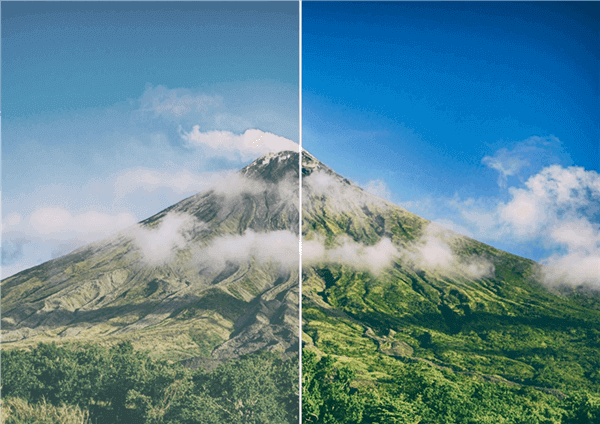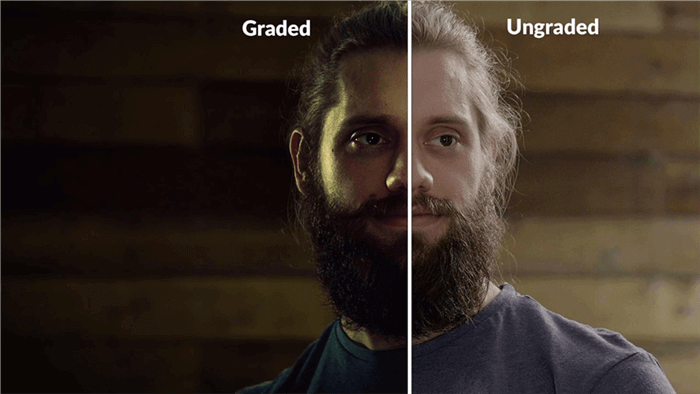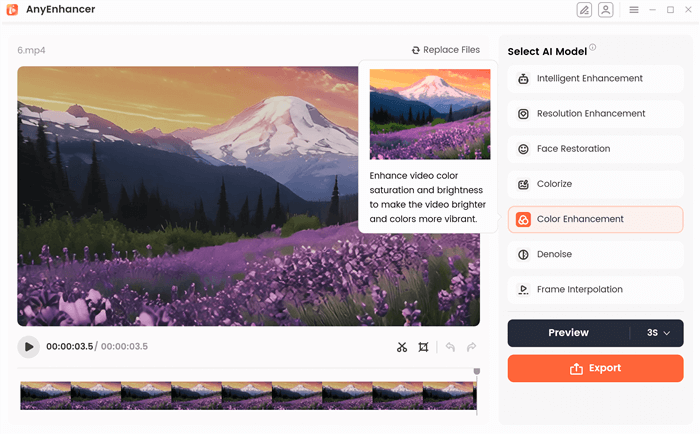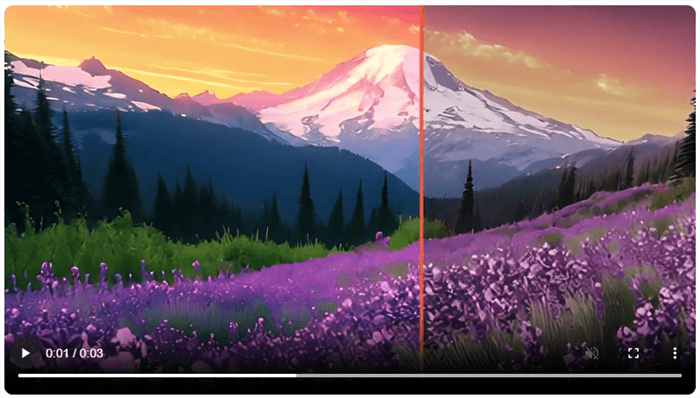Color Correction vs Color Grading: What is the Difference?
Two major modes, color correction and color grading in videography, make a huge difference in overall visual quality. Color correction manages or corrects various technical problems, while color grading is an artistic process that enhances the aesthetic appeal of the footage. Understanding color correction versus color grading is essential to convey filmmakers’ narrative and artistic intent effectively. Let’s explore color correction vs color grading!
Within video production, color correction vs color grading is a common debate regarding enhancing visuals. Though these two methods fall under the category of the same result, which is professional and polished footage, they have different purposes and methods for achieving it. Color correction refers to making images ‘technically’ right, where real-life colors should be as accurate as possible. In contrast, color grading concerns stylizing the footage visually and emotionally. In the following article, each of these processes is explained in detail, and their differences are discussed, helping the content creator make an educated choice in post-production workflow.
Table of ContentsHide
What is Color Correction?
Color correction is, in general, the process of post-production in which video footage is made to look just right. It includes various adjustments in white balance, contrast, video brightness, saturation, and exposure. The major intent of color correction is to rectify technical errors that may have happened while filming, like poor lighting conditions or unbalanced color due to multiple light sources.
For example, if a scene shot with incandescent lighting is overly yellow, the color correction would neutralize the color cast to white balance it, bringing the footage closer to what it should be to the human eye. Hence, the focus is on making the colors natural, and the color correction provides the foundation whereby other creative adjustments can be made accordingly. This typically happens at the start of an edit, enabling an editor to set a solid visual foundation before any creative effects may be applied.

Color Correction
Let’s dive into the specific elements adjusted during color correction.
Adjusting White Balance
White balance adjustment ensures that whites appear white and removes any color cast from lighting. By adjusting the white balance, editors neutralize these color tints, resulting in a more natural look that reflects real-life colors.
Balancing Exposure and Contrast
Proper exposure adjustment ensures that details in the highlights and shadows are visible, while contrast adjustments create a balanced difference between light and dark areas.
Enhancing Saturation and Hue
Color correction may also involve adjusting saturation (the intensity of colors) and hue (the shade of each color). These adjustments make the footage appear vibrant without distorting natural colors, ensuring it accurately represents the original scene.
What is Color Grading?
Color grading after color correction allows for more creativity, including special enhancements in video footage. While color correction is about fixing errors, color grading purely involves stylistic flair, emotional resonance, and visually telling your story. This includes modifying colors, tones, and contrast to a specific look that the desired narrative mood should portray.
For instance, the filmmaker might render a romantic scene warm and in gold so that it turns out loving and melancholic or use cool tones in a thriller to raise tension and discomfort. Color grading is often executed through creative techniques such as color wheels, curves, and LUTs to change colors and maintain a visual feel throughout the piece. This will be key in artwork to set the general tone and enhance the emotional experience of a viewer.

Color Grading
Let’s explore the elements involved in color grading to understand color correction vs grading better!
Setting the Mood with Tones and Shades
Color grading allows filmmakers to create specific atmospheres through tone manipulation. By selecting a consistent tone or shading across scenes, editors can evoke emotions and establish visual continuity.
Using LUTs (Look-Up Tables) for Stylistic Effects
LUTs are pre-set color filters that add distinct effects to footage. These tables apply a unique color transformation, often replicating certain “looks,” like cinematic, vintage, or high-contrast styles.
Adjusting Color Contrast and Highlights
In color grading, editors frequently manipulate color contrast, saturation, and highlights to enhance focus and drama. This approach guides the viewer’s attention and emphasizes critical aspects of the narrative, making scenes more impactful.
Comparison Table: Key Differences Between Colour Correction Vs Colour Grading
This table summarizes the color correction vs grading. While color correction ensures technical accuracy, color grading adds the final artistic layer, bringing the footage to life with mood and style.
| Features | Color Correction | Color Grading |
| Purpose | Achieve natural, accurate colors | Add mood, tone, and visual style |
| Focus | Corrects technical inconsistencies | Enhances aesthetic and emotional impact |
| Primary Adjustments | White balance, contrast, exposure, hue | Tones, LUTs, highlights, stylistic effects |
| Process Order | Occurs early in post-production | Applied later in post-production |
| Software Examples | Adobe Premiere Pro, Final Cut Pro | DaVinci Resolve, Adobe After Effects |
| Effect on Storytelling | Ensures clarity and color accuracy | Elevates visual storytelling through style and emotion |
How to Color Correct Video via AI-Powered Tool | AnyEnhancer
Looking to elevate your video quality with seamless color correction? AnyEnhancer offers an AI-driven Color Enhancement model that simplifies the process, making your footage look vivid, balanced, and professional. This advanced model analyzes each frame, adjusting brightness, contrast, and color temperature for optimal visual clarity, perfect for creators who want vibrant and accurate colors without the hassle of manual editing.
Beyond color correction, AnyEnhancer includes several standout features. The tool’s Denoise Model removes grainy noise for cleaner visuals, while its Face Restoration function sharpens facial details in blurry videos. Additionally, the Colorize Model brings new life to black-and-white footage, and Resolution Enhancement provides 2K and 4K options to upscale videos for superior clarity and detail.
Free Download for all windows & 100% safe Free Download for all mac & 100% safe
Free Download100% Clean & Safe
Key Features:
- AI-Powered Color Enhancement – Achieves natural color balance and brightness, enhancing overall video quality.
- Denoise Model – Removes unwanted noise for a cleaner, more professional look.
- Face Restoration – Enhances facial details in low-quality footage for sharper visuals.
- Colorize Model – Adds color to monochrome footage, breathing new life into old videos.
- Resolution Enhancement – Offers 2K and 4K upscaling to improve sharpness and detail.
Step 1. Free download and install AnyEnhancer on your computer. Launch AnyEnhancer, then either drag your video file into the workspace or click the “Upload Video” button.

Upload the Original Video
Step 2. Choose the “Color Enhancement” feature to adjust the video’s color settings.

Choose the Color Enhancement Model
Step 3. Click “Preview” to compare the enhanced video with the original and review the adjustments.

Preview the Color Correct Effect
Step 4. When satisfied, select “Export,” enter a file name, choose your preferred format, and save location, then click “Export” again to save your edited video.

Choose the Preview Duration
FAQs of Color Correction Vs Grading
What’s the main difference between color correction and color grading?
Color correction focuses on fixing technical issues, such as exposure and white balance, to achieve a natural and accurate look. Color grading, on the other hand, is about adding stylistic choices that enhance mood and visual tone, aligning with the project’s narrative.
Do I need both color correction and color grading for my video?
Yes, in most cases. Color correction is essential to ensure the footage looks balanced and realistic, while color grading can be applied afterward to add depth and aesthetic appeal, making your project visually compelling.
Can AI tools handle both color correction and grading?
Some AI tools, like AnyEnhancer, are designed to correct color by automatically adjusting brightness, contrast, and color balance. However, while they can assist with basic grading, more complex, stylized grading might still require manual adjustments or advanced software.
Conclusion
Color correction and color grading make the video content look great. Color correction is about fixing all the technical adjustments, while color grading puts the final touch of art to the unusual enhancements in the mood and tone of the project. If you’re a creator looking to lighten your burden with color correction, then AnyEnhancer certainly does that with its AI-powered features. With one-click adjustments and powerful color enhancement features, AnyEnhancer easily produces quality and visually appealing videos with the least effort. Easily try AnyEnhancer, bringing all videos to a professional-grade quality!
AnyEnhancer – AI Video Enhancer
Download AnyEnhancer to enhance your video quality to 4K resolution, remove grain, smooth motion, color correction, and add color to black and white videos with just one click.
Product-related questions? Contact Our Support Team to Get Quick Solution >

